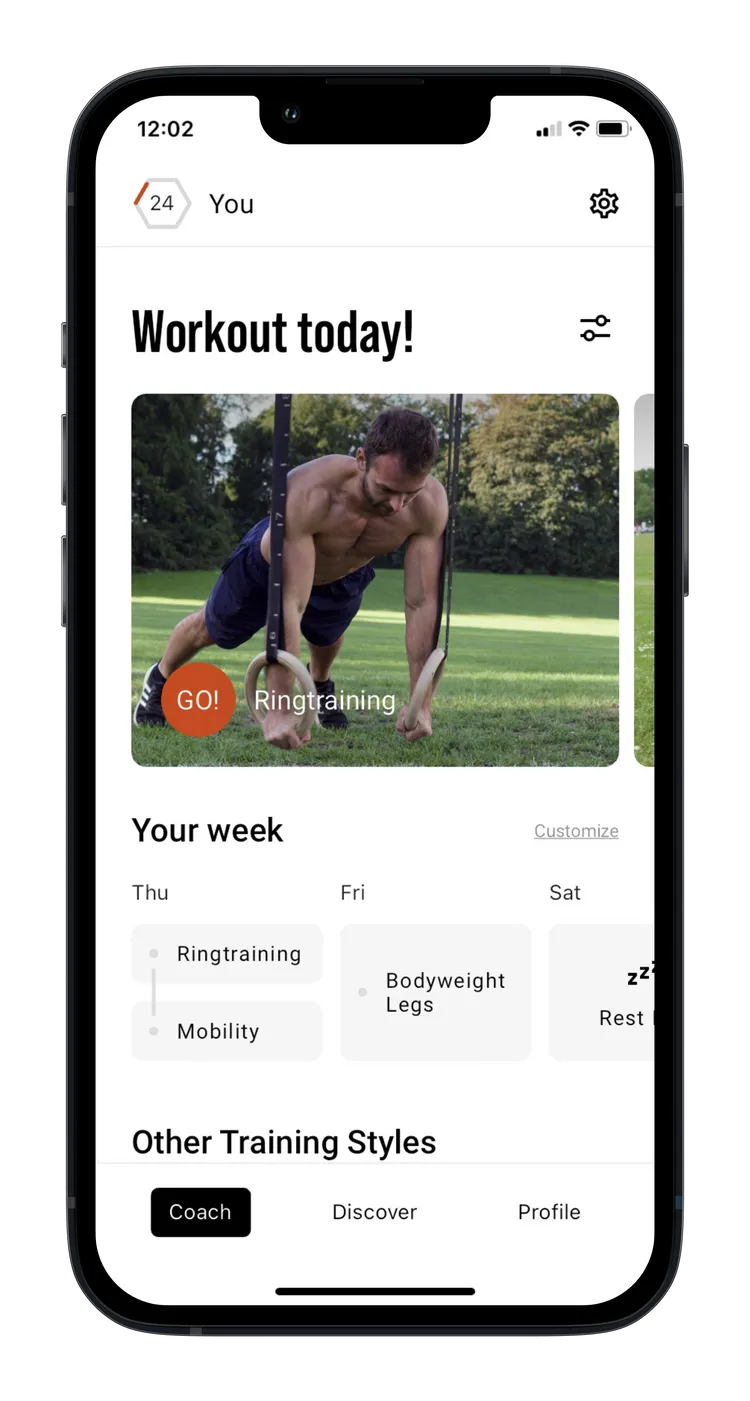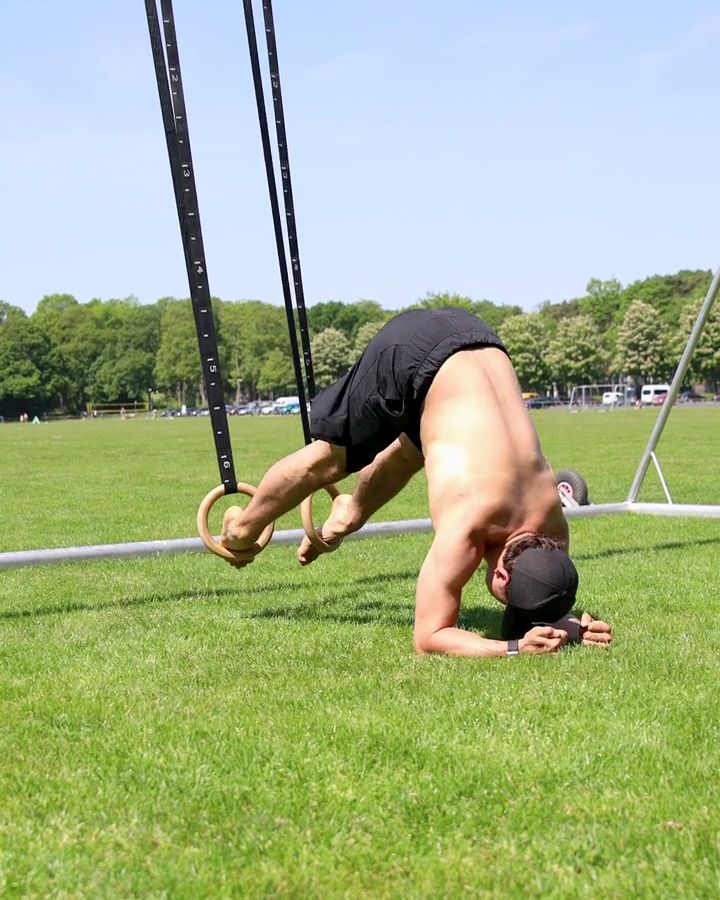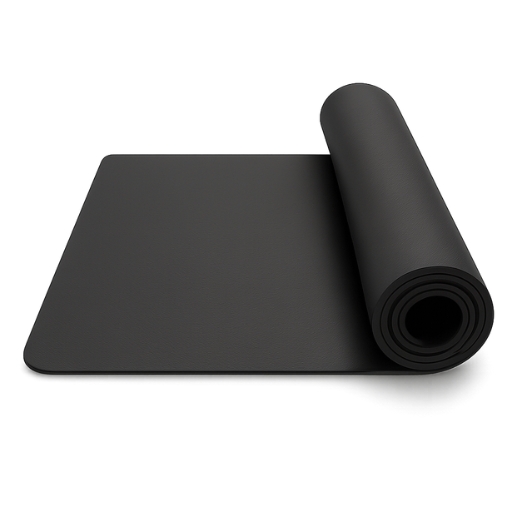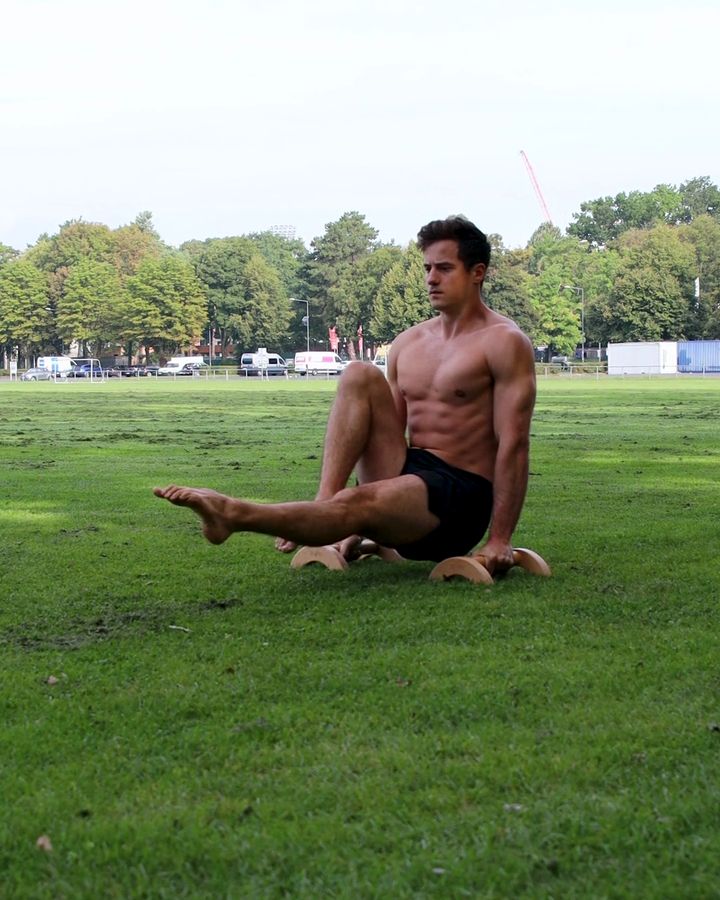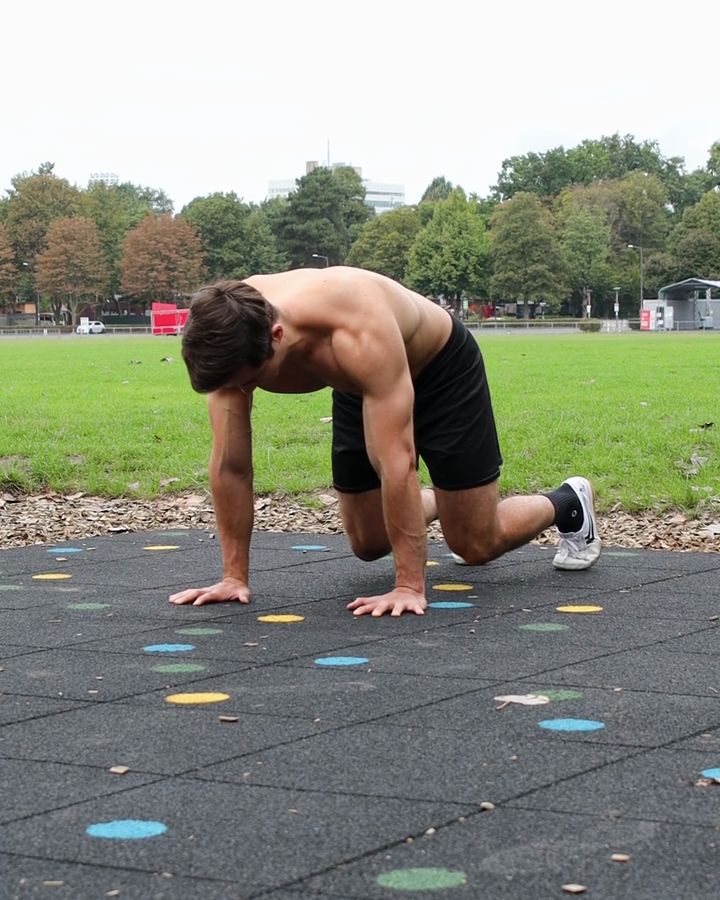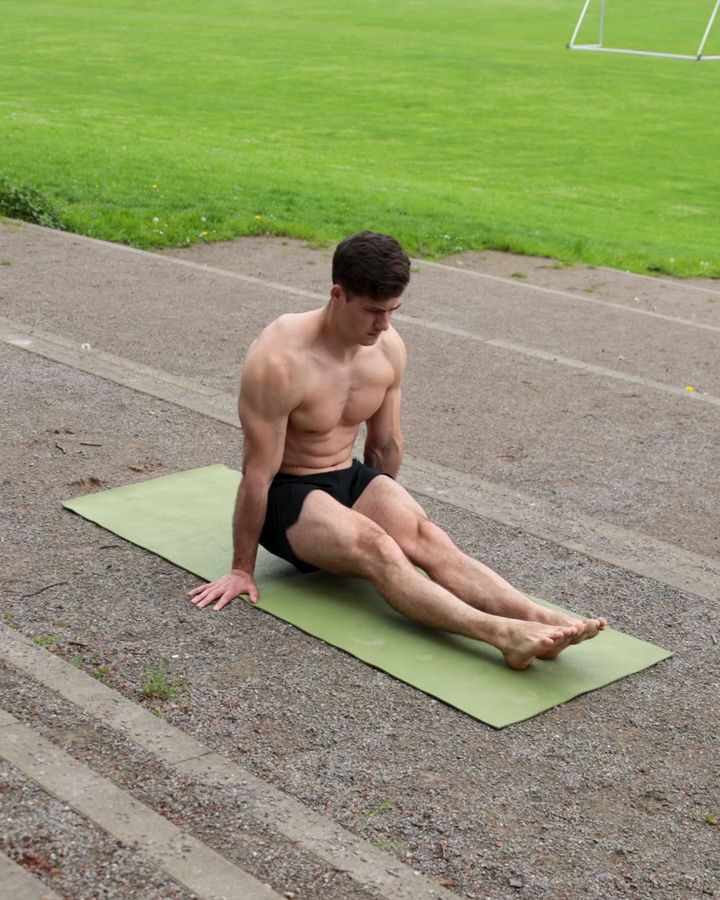Ring Pike Ups
Ring pike ups with your feet in the gymnastic rings are a challenging exercise that heavily engages the abs, shoulders, and core. During the movement, you lift your hips upwards while keeping your legs straight, so that your body forms an inverted V-position. The instability of the rings further challenges the stabilizing muscles, especially in the shoulders and core, to maintain balance. This variation is a progression from regular pike ups and enhances your body tension.
Necessary equipment
Ring Pike Ups - the correct execution
- Get into the push-up position
- Your feet are in the rings or footstraps
- Make sure your torso is firm and your spine is straight
- Bend your hips and pull your buttocks over your head
- Legs remain extended
The exercise Ring Pike Ups is intended to be used as a hypertrophy exercise.
Which muscles are trained by Ring Pike Ups?




Secondary trained muscles for Ring Pike Ups
Front Delts - The front part of the deltoid muscle, also known as the anterior shoulder, is located at the front of the shoulder. It is primarily involved in the forward movement of the arm, such as lifting the arm forward. It also assists in the internal rotation of the arm. This muscle is engaged in activities that involve lifting objects in front of the body or pushing forward.
Alternative variants of Ring Pike Ups:
Ring Pike Ups on Forearms
Ring pike ups on the forearms are an easier variation of the exercise, as the lower position offers more stability and shortens the lever. This modification reduces the strain on the shoulders while still challenging the core. It is a suitable precursor to pike ups on the hands, allowing you to gradually build strength and control.
Necessary equipment
Ring Pike Ups on Forearms - the correct execution
- Go into the plank position
- Your feet are in the rings or footstraps
- Make sure your torso is firm and your spine is straight
- Bend your hips and pull your buttocks over your head
- Legs remain extended
Similar exercises to Ring Pike Ups
One Leg L Sit
The One-Leg L-Sit on the parallettes is a challenging exercise that primarily targets the abdominal muscles, hip flexors, and supporting muscles. In this exercise, the athlete assumes an L-position, keeping one leg straight while bending the other. It requires a high level of body tension, strength, and balance.
The one-legged variation serves as a preparatory exercise for the classic L-Sit, where both legs are extended. Holding this position engages the abdominal muscles even more intensely.
An even easier progression is the Tuck L-Sit, where both legs are bent and pulled close to the body. This reduces the lever arm, making it easier to hold the position while still engaging the core and supporting muscles.
Quadruped Stand, All Fours Position
The Quadruped Stand, also called the All Fours Position, strengthens your shoulder and belly muscles. It’s a great beginner exercise and an easy way to start bodyweight training. When done correctly, the Quadruped Stand is just as good for your core as the Plank. It helps you stay stable, improves your posture, and you can make it harder by lifting one arm or one leg.
Assisted L Sit
In the supported L-Sit, the legs are extended with the heels resting on the ground. Compared to the regular L-Sit, where the legs are fully lifted off the ground, the supported version is ideal for beginners, as it requires less core strength while still preparing the upper body for the proper L-Sit. Another easier variation is the Tuck L-Sit, where the knees are drawn toward the chest.
This could also be interesting
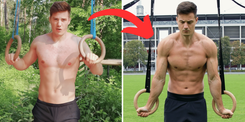
Calisthenics Body Transformation – How to Build a Strong, Lean, and Athletic Physique
Transform your body with Calisthenics! Build muscle, burn fat & achieve a shredded physique with bodyweight training. See real before & after results!
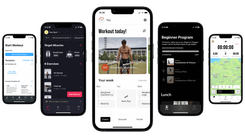
The Best Fitness Apps in 2025: Our Top 10 Recommendations
Don’t miss the best fitness apps of 2025: surprising favorites, free options, and perfect tools for your workouts. Find the ideal app today!
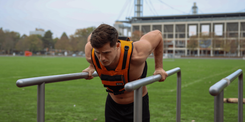
Complete Calisthenics Skills List – 40+ Exercises from Beginner to Pro
Which calisthenics skills should you learn first? And which ones will really help you progress? In this article, you’ll find a complete list of over 40 exercises – from the very basics to the toughest moves for professionals. Each exercise comes with instructions, so you can immediately integrate them into your training.
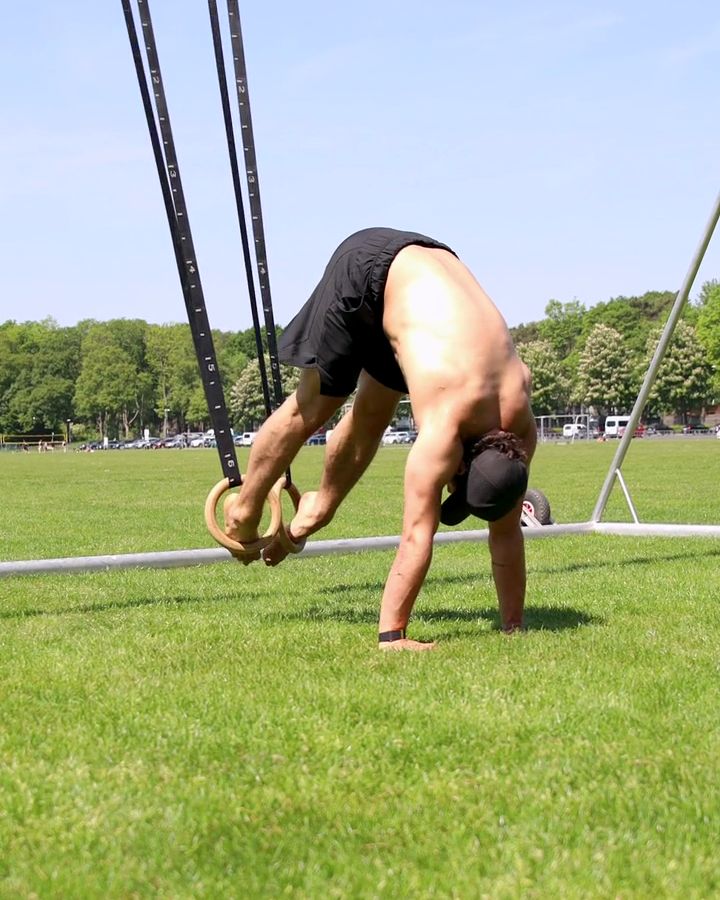
~e5724973d14549c23ea8a586b5736b36.png?alt=media)
